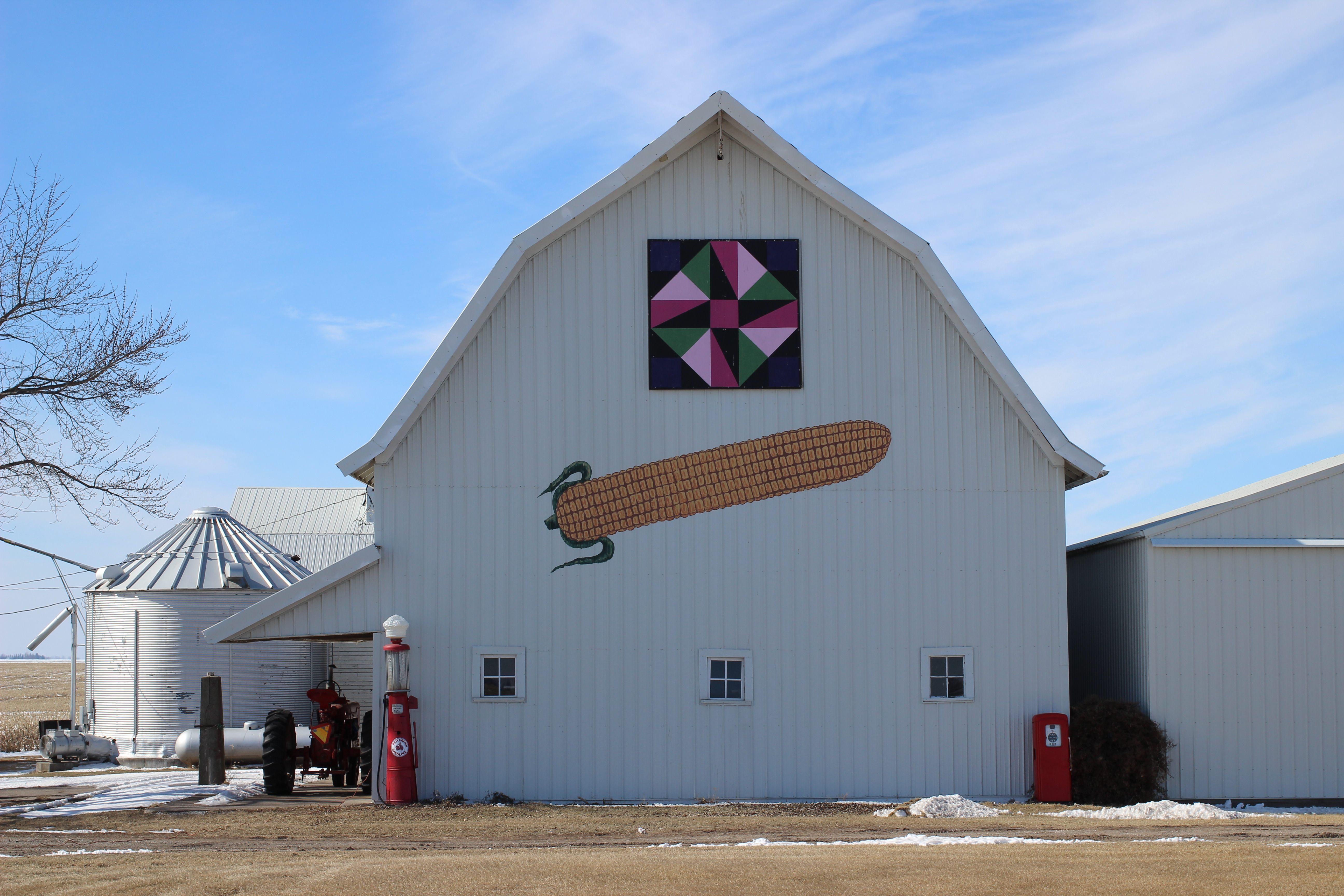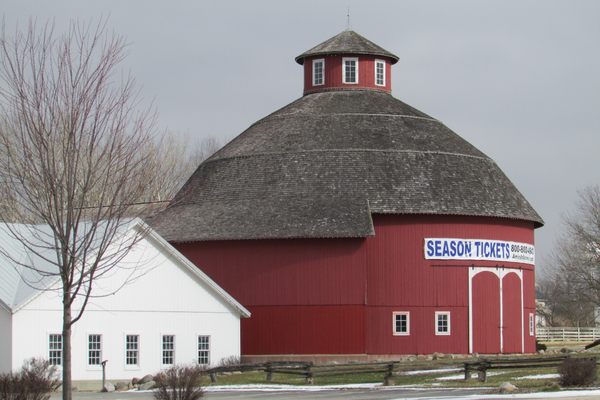Driving the Barn Quilt Trail of Washington County, Iowa

The barn quilt called “Pinwheel Square” on the Amish Loop, just outside the town of Washington. (Photograph by Christopher Busch)
As physical objects, barn quilts are very simple. A barn owner or homeowner paints a large piece of wood to look like a quilt square—bold, basic geometric shapes–and then mounts it on a building, facing a road. Sometimes the painted squares are modeled after those on family heirloom quilts. Sometimes they’re new patterns or pictures. Thanks to the rise of barn quilt trails, these decorations have become one of the most surprising, and delightful, pleasures of driving through rural America.

The square called “Lotus Flower” on the Amish Loop. According to Barn Quilts of Washington, local Amish do not hang barn quilts on their barns, but the squares on the Amish Loop feature patterns and colors traditional to Amish quilting. (Photo by Christopher Busch)
The first official barn quilt trail stretches through Adams County, Ohio and dates to 2001, when Donna Sue Groves decided to honor her mother and attract visitors to her hometown by initiating the creation of 20 barn quilt squares, the number her mother would stitch into a typical bed quilt. In the years since, a “National Clothesline of Quilts” has sprung up in across the country, stretching into 45 states and Canada. In 2012, Groves partnered with Suzi Parron to publish Barn Quilts and the American Quilt Trail Movement.
I’ve been particularly captivated by the quilts of Washington County, a 571-square-mile swatch of southeastern Iowa farmland. Active since 2007, the organization called Barn Quilts of Washington County has overseen development of more than 120 quilts, which are hung only on barns at least 50 years old and facing paved roads. Like the original Adams County quilters, Washington County’s barn quilters see their work as integral to both community building and to drawing tourists off the interstates and into the local economy.

Like this “windmill” pattern, most barn quilt squares are composed of simple, bold shapes that can be seen easily from the road. (Photo by Christopher Busch)
In Washington County, an advisory committee selects quilt block designs, reaches out to barn owners, and publicizes the quilts. They also post handy maps and a pamphlet on their website, both of which I printed on a 10-degree January weekend and carried with me on the 40 minute drive from my home in Iowa City.
The barn quilts are arranged in four loops, each with a name that announces a theme informing color and pattern selection: the “Agricultural Loop,” the “Amish Loop,” the “Liberty Loop,” and the “Nature Loop.” I cut across an unpaved road and took the loops in parts, catching barn quilts along both the Agricultural Loop and the Amish Loops and in the town of Washington itself.

Within the town of Washington, Iowa, barn quilts are mounted on the sides of houses and garages. (Photo by Christopher Busch)
The maps make it easy to plug addresses into smartphones and conduct a targeted hunt, but real fun lies in roaming hills and just spotting quilts from the road. The roads between the quilts offer discoveries of their own: an agri-themed playground outside an old brick schoolhouse or a mysterious pile of frozen pig carcasses.
Washington County’s barn quilts celebrate the quilt-making traditions of local communities. They unite service groups, families, volunteers, and residents in planning, hanging, and repairing quilts. They draw attention to aging historic buildings, fostering support for preservation. They draw people like me into town, to spend money on lunch in little Washington restaurants or on beer at the Kalona Brewery. But most significantly, the barn quilts look good against summer’s green cornstalks. Even in January, they serve as bright reminders of lives inside the rural homes dotting the cropland, stretching quietly for white winter miles.

This Keota, Iowa farm features the quilt pattern called “Turkey in the Straw.” (Photo by Christopher Busch)
























Follow us on Twitter to get the latest on the world's hidden wonders.
Like us on Facebook to get the latest on the world's hidden wonders.
Follow us on Twitter Like us on Facebook